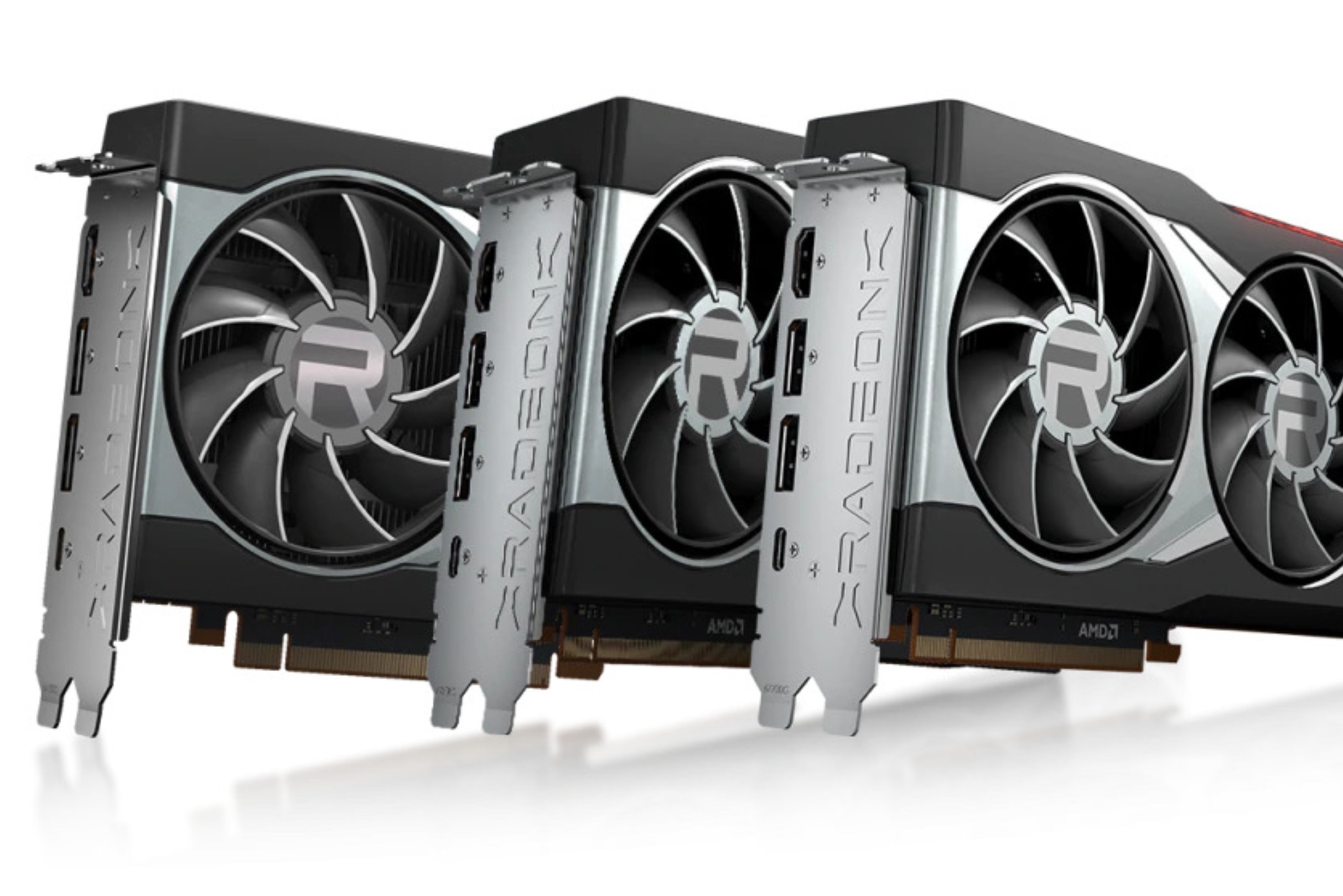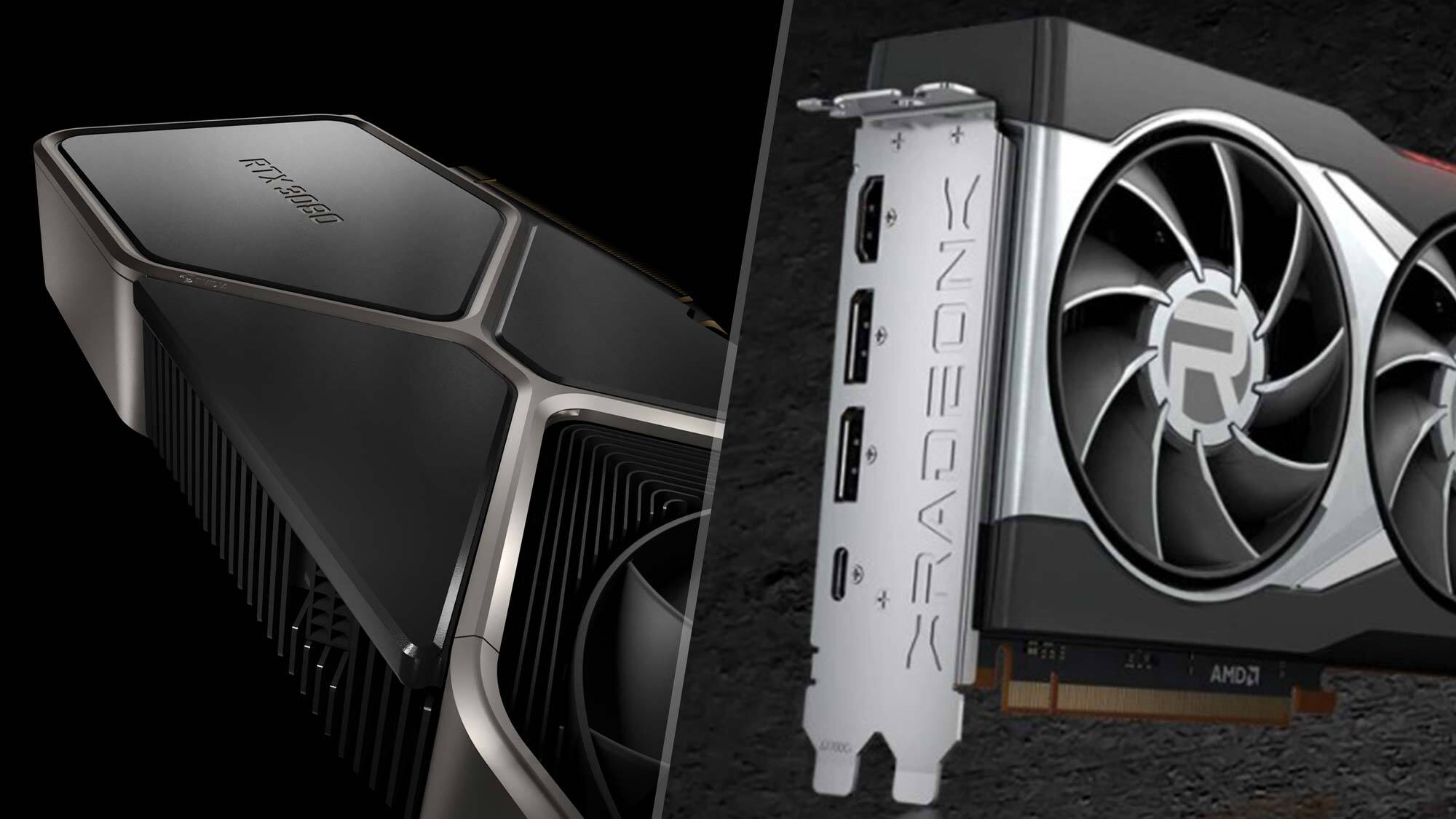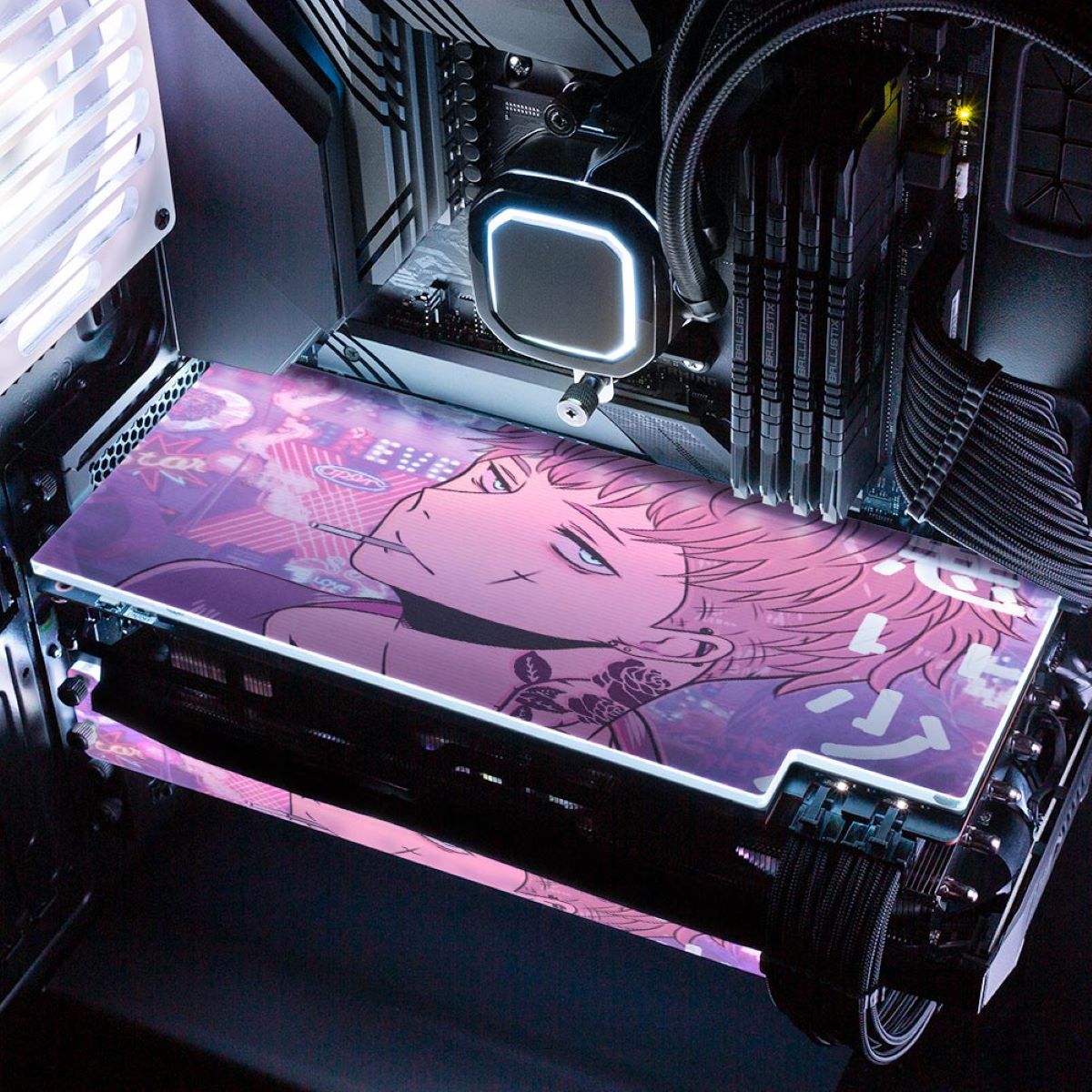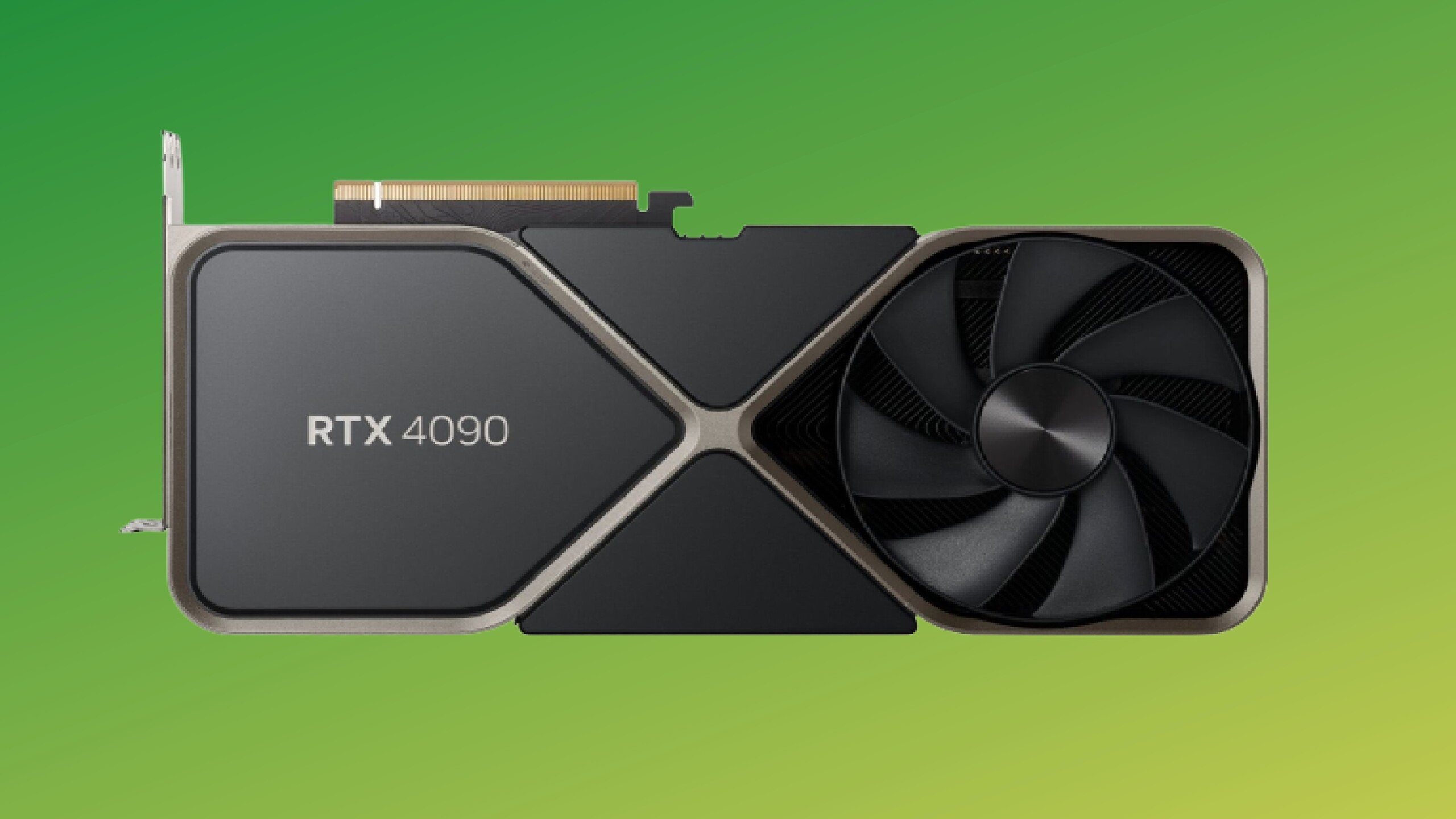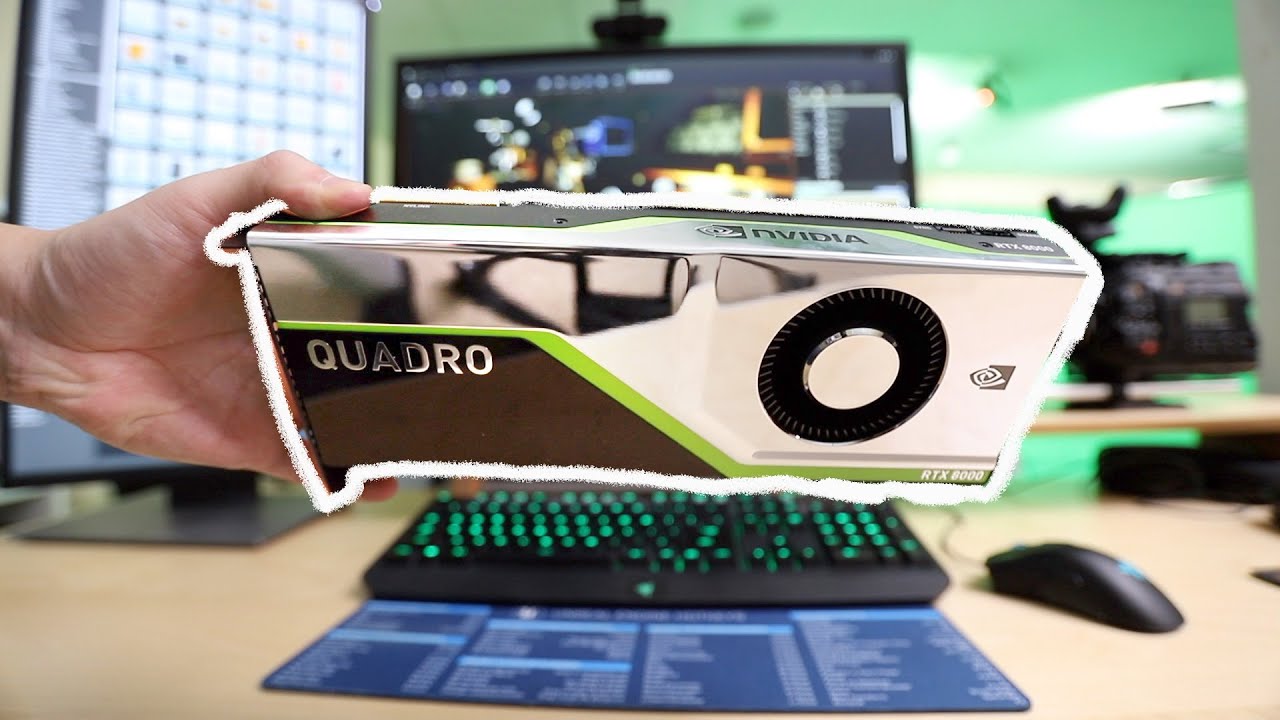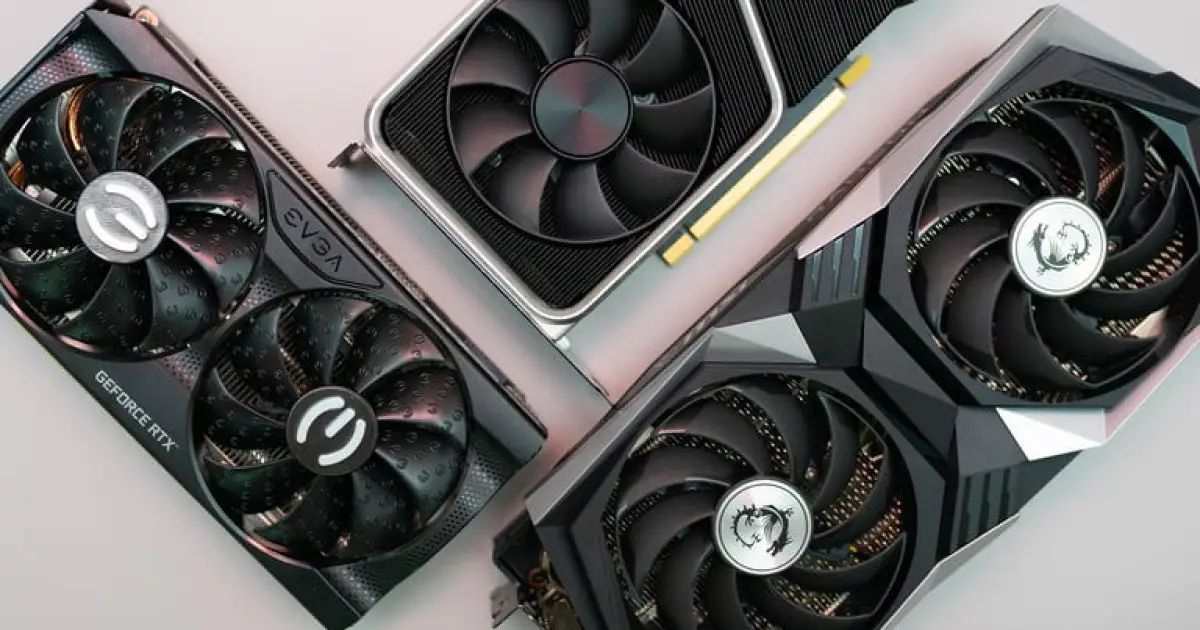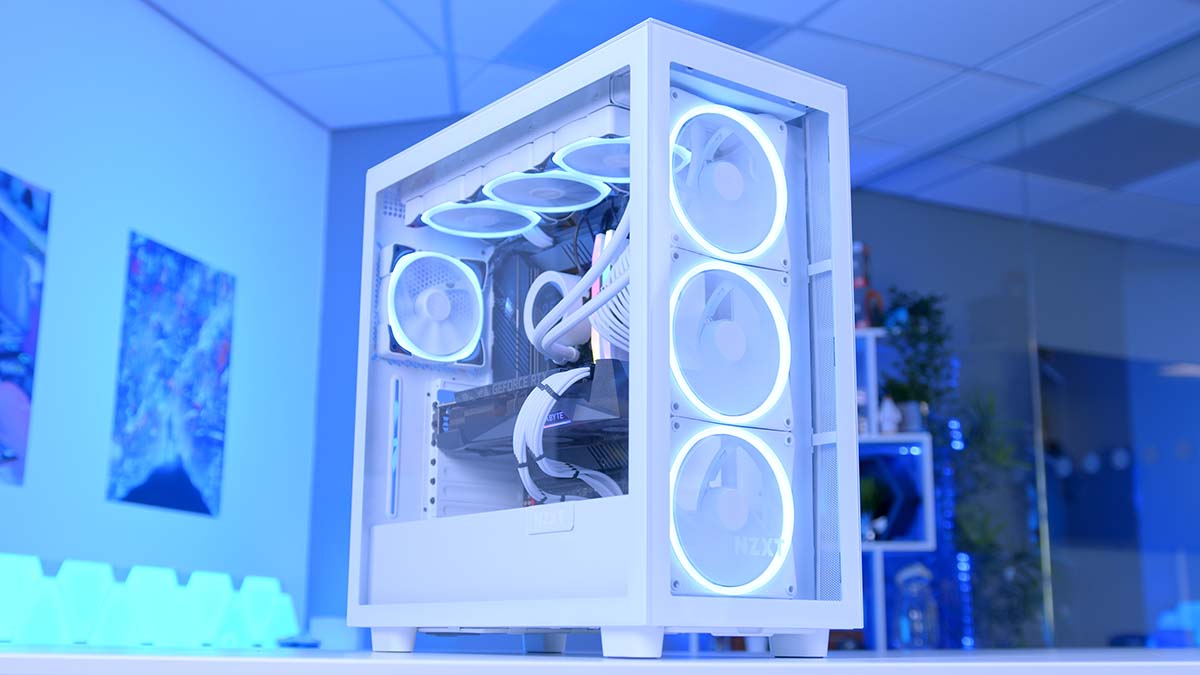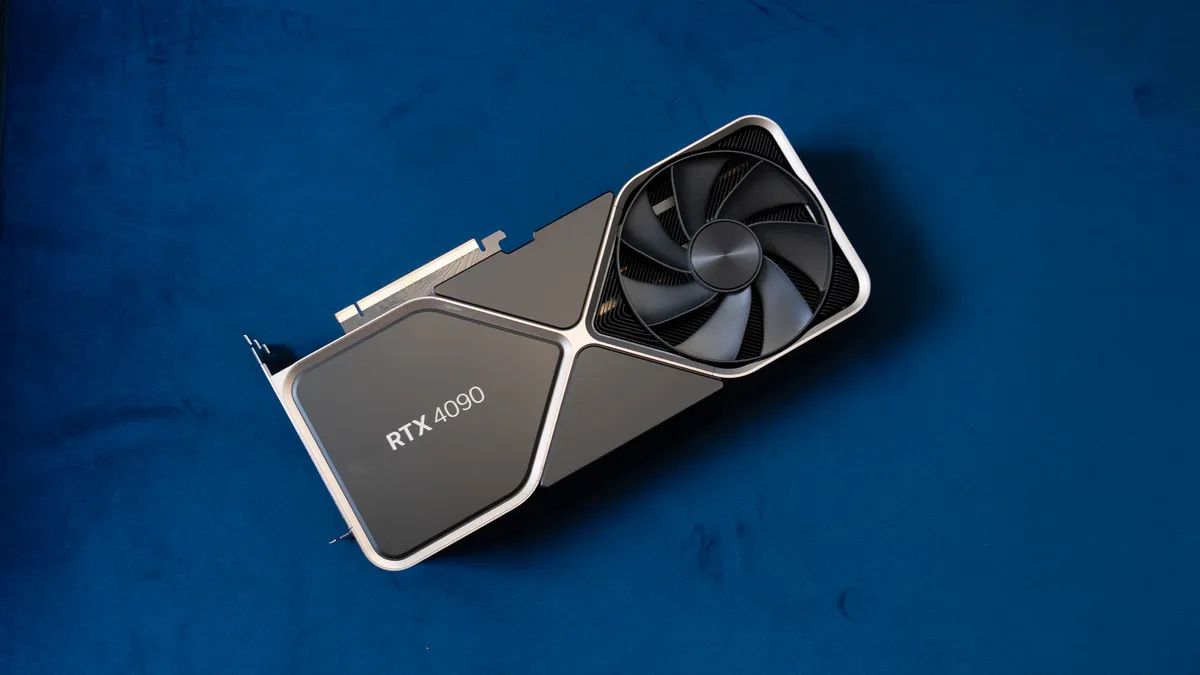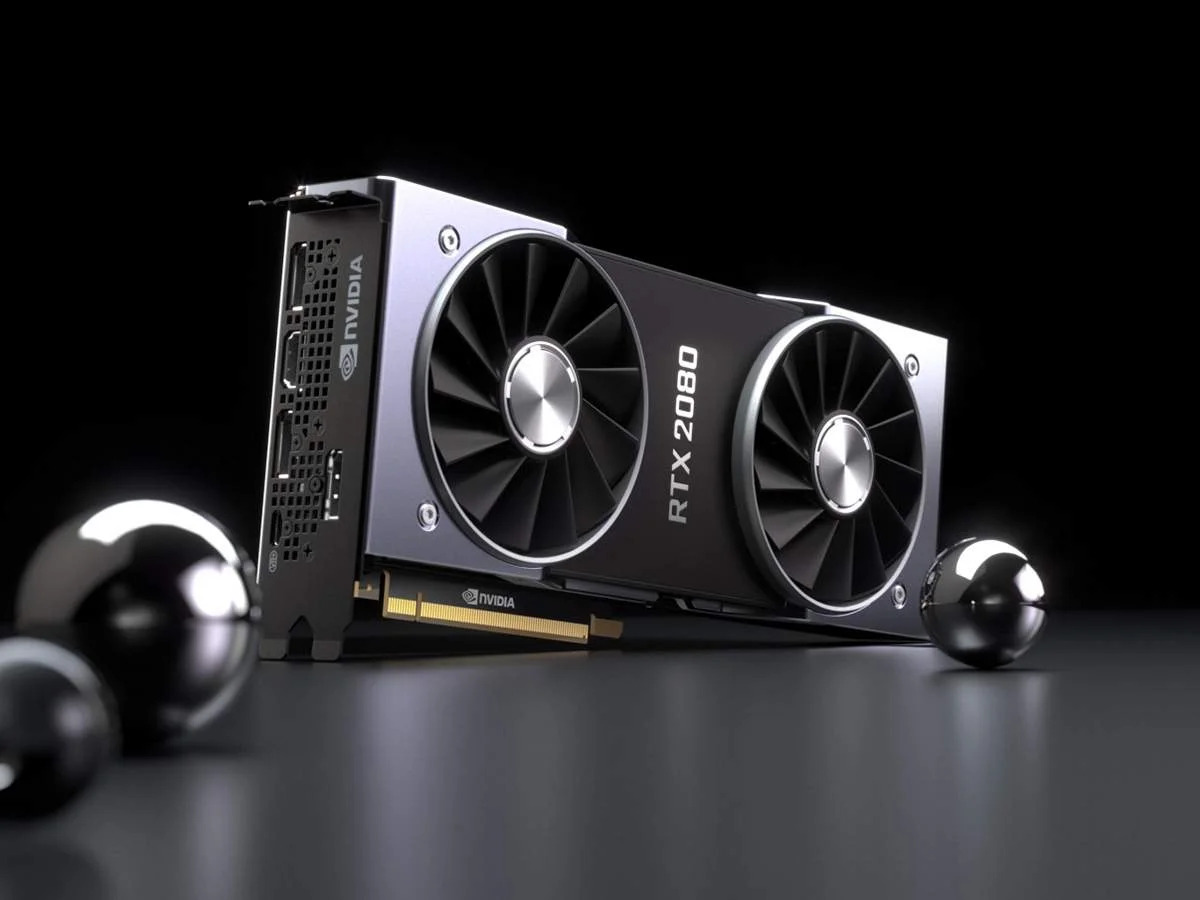Introduction
When it comes to high-performance graphics processing units (GPUs), two of the most prominent players in the market are AMD and NVIDIA. These companies have been pushing the boundaries of gaming and graphics technology, constantly releasing new GPUs that offer incredible performance and stunning visual experiences.
AMD, known for its Radeon graphics cards, and NVIDIA, renowned for its GeForce lineup, are constantly in competition to offer the best GPUs for gamers and professionals alike. One of the most sought-after GPUs in recent years has been the NVIDIA RTX 3080, lauded for its impressive performance and real-time ray tracing capabilities.
In this article, we will dive into the world of AMD and NVIDIA GPUs, exploring their differences and similarities, and ultimately identifying the AMD GPU that is equivalent to the powerful NVIDIA RTX 3080. We will examine key features, specifications, benchmarks, and pricing to provide a comprehensive understanding of these GPUs.
Whether you’re a hardcore gamer, a professional video editor, or a 3D rendering enthusiast, understanding the AMD GPU equivalent to the RTX 3080 will help you make an informed decision when it comes to selecting the right GPU for your needs. So, let’s delve into the world of AMD and NVIDIA graphics cards to find out which AMD GPU stands up against the mighty RTX 3080.
Understanding AMD and NVIDIA GPUs
Before diving into the comparison between AMD and NVIDIA GPUs, it’s important to have a basic understanding of what these graphics processing units are and how they contribute to the overall performance of your system.
Both AMD and NVIDIA GPUs are specialized processors designed to handle complex mathematical calculations required for rendering graphics and images. They are the heart and soul of modern gaming and graphics-intensive applications, working in tandem with your CPU to deliver smooth and immersive visuals.
AMD, or Advanced Micro Devices, is a Silicon Valley-based company that has been a significant player in the semiconductor industry for decades. Their Radeon series of GPUs offers a wide range of options for different budgets and performance levels. Known for their competitive pricing and value for money, AMD GPUs have gained a loyal following among gamers and content creators alike.
NVIDIA, on the other hand, is a well-established leader in the graphics processing industry. Their GeForce series of GPUs are known for their cutting-edge features, exceptional performance, and advanced technologies like real-time ray tracing and AI-driven rendering. NVIDIA GPUs are highly regarded among gaming enthusiasts and professionals for their raw power and graphical fidelity.
Both AMD and NVIDIA GPUs utilize different architectures and technologies to deliver their performance. AMD has its Graphics Core Next (GCN) architecture, while NVIDIA employs its Turing architecture for GPUs like the RTX 3080. These architectures determine how the GPUs handle tasks such as shading, texture mapping, and memory management, ultimately affecting their overall performance and efficiency.
When it comes to software support, both AMD and NVIDIA provide regular driver updates to optimize GPU performance, ensure compatibility with the latest games and applications, and introduce new features and enhancements. It’s crucial to keep your drivers up to date to take advantage of these improvements and maintain the stability and reliability of your GPU.
Now that we have a fundamental understanding of AMD and NVIDIA GPUs, the next step is to compare their performance and find the AMD GPU that can rival the mighty RTX 3080. Let’s delve into the specifications, features, and benchmarks to determine which AMD GPU comes close to the performance of the RTX 3080.
GPU Performance Comparison: AMD vs NVIDIA
When it comes to GPU performance, both AMD and NVIDIA have their distinct strengths and weaknesses. To compare the performance of these two giants in the industry, we need to consider factors such as clock speed, number of cores, memory bandwidth, and architecture.
AMD GPUs have often been praised for their excellent multi-threaded performance, making them a preferred choice for tasks that require heavy parallel processing, such as content creation and video editing. On the other hand, NVIDIA GPUs, particularly those in the GeForce RTX series, excel in real-time ray tracing, thanks to their dedicated ray tracing cores and AI tensor cores.
Another essential consideration is the clock speed, which determines how fast the GPU can process instructions. AMD GPUs typically have higher base clock speeds, while NVIDIA GPUs often have higher boost clock speeds. This can result in slightly different performance profiles between the two brands.
The number of cores in a GPU plays a crucial role in its performance. AMD GPUs tend to have a higher number of cores compared to their NVIDIA counterparts in the same price range, which can lead to better performance in certain scenarios. However, NVIDIA GPUs compensate for this with their advanced architecture and features, resulting in competitive performance even with fewer cores.
Memory bandwidth is another vital aspect to consider in GPU performance. It determines how quickly the GPU can access and transfer data in and out of its memory. Both AMD and NVIDIA GPUs offer high-memory bandwidth options, with AMD leveraging efficient memory controllers in their designs.
Architecture is perhaps one of the most significant factors that differentiate AMD and NVIDIA GPUs. NVIDIA’s Turing architecture, found in their RTX series, introduced dedicated ray tracing and AI tensor cores, bringing real-time ray tracing capabilities and enhanced deep learning performance to the table. AMD, on the other hand, focuses on performance-per-dollar with their RDNA architecture, showcasing impressive multi-threaded performance.
Ultimately, the choice between AMD and NVIDIA GPUs depends on your specific requirements and intended usage. If you prioritize gaming and real-time ray tracing, NVIDIA’s RTX series may be your best bet. On the other hand, if you’re more interested in multi-threaded performance and value for money, AMD’s Radeon GPUs are worth considering.
Now that we have a better understanding of the GPU performance comparison between AMD and NVIDIA, let’s explore the specific AMD GPU that can match up to the power and capabilities of the NVIDIA RTX 3080.
The AMD GPU Equivalent to NVIDIA RTX 3080
When it comes to finding the AMD GPU that can go head-to-head with the NVIDIA RTX 3080, one standout option is the AMD Radeon RX 6900 XT. This high-end graphics card from AMD boasts impressive performance and features that rival the RTX 3080.
The Radeon RX 6900 XT is built on AMD’s RDNA 2 architecture, which brings significant improvements in performance and power efficiency. It features 80 compute units and 16GB of GDDR6 memory, providing ample horsepower for demanding gaming and content creation tasks.
In terms of raw performance, the RX 6900 XT can deliver similar or even better results compared to the RTX 3080 in many gaming benchmarks. It excels in scenarios where high multi-threaded performance is required, thanks to the powerful compute units and optimized architecture.
Furthermore, the RX 6900 XT supports real-time ray tracing, allowing for enhanced visual effects and realistic lighting in supported games. While it may not match the dedicated ray tracing performance of the RTX 3080, it still provides a satisfying ray tracing experience.
In addition to performance, the RX 6900 XT offers other notable features. It supports AMD’s Smart Access Memory technology, which allows the GPU to access the full capacity of your system’s memory, resulting in potential performance gains in certain games.
AMD also emphasizes its commitment to open-source technologies, making the RX 6900 XT an appealing choice for Linux users and developers who prefer an open ecosystem.
It’s worth noting that the availability of GPUs, including the Radeon RX 6900 XT, can be a challenge due to high demand and limited supply. However, if you manage to get your hands on this AMD graphics card, you can expect a powerful and capable GPU that can rival the NVIDIA RTX 3080.
Now that we’ve explored the AMD GPU equivalent to the RTX 3080, let’s delve into the key features and specifications of the Radeon RX 6900 XT to get a better understanding of what it brings to the table.
Key Features and Specs of AMD Equivalent GPU
The AMD Radeon RX 6900 XT, the equivalent GPU to the NVIDIA RTX 3080, comes equipped with a range of impressive features and specifications that make it a top contender in the high-end graphics card market.
One of the standout features of the RX 6900 XT is its utilization of AMD’s RDNA 2 architecture. This advanced architecture brings significant improvements in performance and power efficiency compared to previous generations. With 80 compute units, the RX 6900 XT offers exceptional compute power for both gaming and professional workloads.
Graphics memory is an essential aspect of any high-end GPU, and the RX 6900 XT doesn’t disappoint. With 16GB of GDDR6 memory, it provides ample space for demanding gaming scenarios and resource-heavy content creation tasks. The large memory capacity ensures smooth performance even with high-resolution textures and complex 3D models.
The RX 6900 XT also supports real-time ray tracing, a feature that has become increasingly popular in modern gaming. It allows for realistic lighting, reflections, and shadows, enhancing the overall visual fidelity of supported games. While the ray tracing performance may not be as powerful as the RTX 3080, the RX 6900 XT still delivers an immersive gaming experience with impressive visuals.
Another notable feature of the RX 6900 XT is its support for AMD’s Smart Access Memory (SAM) technology. When paired with a compatible AMD Ryzen processor, SAM enables the GPU to access the entire system’s memory, potentially improving performance in certain games that benefit from increased memory bandwidth.
In terms of connectivity, the RX 6900 XT features three DisplayPort 1.4a outputs and a single HDMI 2.1 port. This allows for easy multi-monitor setups and compatibility with the latest high-resolution displays.
Cooling is crucial to maintaining optimal GPU performance, and AMD has equipped the RX 6900 XT with a robust cooling solution. With a triple-fan design and a large heatsink, the GPU stays cool even during intense gaming sessions, ensuring consistent performance without throttling.
Overall, the AMD Radeon RX 6900 XT offers a host of features and specifications that make it a viable alternative to the NVIDIA RTX 3080. Its powerful compute units, ample memory capacity, support for real-time ray tracing, and impressive cooling solution make it an excellent choice for gamers and content creators seeking high-performance graphics.
Next, let’s move on to the crucial aspect of performance benchmarks and comparison between the AMD RX 6900 XT and the NVIDIA RTX 3080.
Benchmarks and Performance Comparison
When it comes to evaluating the performance of the AMD Radeon RX 6900 XT and the NVIDIA RTX 3080, it is vital to consider real-world benchmarks and comparisons. These tests provide valuable insights into how the GPUs perform in various gaming and professional applications.
In gaming benchmarks, the RX 6900 XT has demonstrated its capability to deliver exceptional performance across a wide range of titles. It can handle demanding games at high resolutions and settings, providing smooth frame rates and an immersive gaming experience. While the RTX 3080 often holds a slight edge over the RX 6900 XT in some games, the difference is minimal, and the RX 6900 XT can still deliver impressive results.
When it comes to professional workloads, the RX 6900 XT also shows its strength. With its high compute power and ample memory capacity, it excels in tasks such as 3D rendering, video editing, and content creation. The RX 6900 XT’s superior multi-threaded performance, coupled with its advanced architecture, allows it to handle these professional applications with ease.
In terms of real-time ray tracing, the RTX 3080 has a slight advantage due to its dedicated ray tracing cores. However, the RX 6900 XT is still capable of delivering satisfying ray tracing performance, making it a viable option for gamers who want to experience the enhanced visual effects and lighting that ray tracing brings.
It’s important to note that availability and driver optimizations can have an impact on performance. Both AMD and NVIDIA regularly release driver updates that optimize GPU performance, improve stability, and provide compatibility with the latest games and software. Keeping your drivers up to date is essential for getting the best performance out of your GPU.
Ultimately, the performance comparison between the RX 6900 XT and the RTX 3080 shows that both GPUs are highly capable of handling demanding gaming and professional workloads. While the RTX 3080 may hold a slight advantage in certain scenarios, the RX 6900 XT is not far behind and offers a compelling alternative.
Now that we have explored the benchmarks and performance comparison, let’s move on to discuss the price and availability of these GPUs to help you make an informed decision.
Price and Availability
One critical aspect to consider when choosing a GPU is its price and availability. Availability, especially during high-demand periods, can significantly influence your purchasing decision.
Starting with price, the NVIDIA RTX 3080 is priced competitively in the high-end GPU market. However, due to high demand and limited supply, the actual retail prices can fluctuate and sometimes be inflated by resellers. It’s essential to compare prices from reputable retailers to ensure you’re getting the best deal.
On the other hand, the AMD Radeon RX 6900 XT is also competitively priced in comparison to its NVIDIA counterpart. AMD GPUs have gained a reputation for offering excellent value for money, often providing similar or better performance at a lower price point. However, the availability of the RX 6900 XT, like other in-demand GPUs, can be limited, so it’s crucial to monitor for restocks and be prepared to act quickly when they become available.
Availability is a significant consideration for both the RTX 3080 and the RX 6900 XT. Due to manufacturing constraints, high demand, and supply chain challenges, securing one of these GPUs can be challenging. It’s important to keep an eye on reputable retailers, sign up for stock notifications, and be prepared to act swiftly when they are restocked. Patience and persistence are key in obtaining these highly sought-after GPUs.
In addition to availability, it’s also worth considering the warranty and customer support offered by the GPU manufacturer. Both AMD and NVIDIA provide reliable support for their products, and it’s essential to review the warranty terms and customer reviews to ensure you have peace of mind in case any issues arise with your chosen GPU.
Considering price, availability, and customer support, it’s essential to weigh these factors alongside the performance and features when making a decision between the AMD Radeon RX 6900 XT and the NVIDIA RTX 3080.
Now that we have covered the crucial aspects of price and availability, let’s wrap up this article by summarizing the key points and providing some final thoughts on the AMD GPU equivalent to the NVIDIA RTX 3080.
Conclusion
After delving into the world of AMD and NVIDIA GPUs, comparing their performance, exploring the AMD GPU equivalent to the NVIDIA RTX 3080, and considering factors such as price and availability, we can draw some final insights.
The AMD Radeon RX 6900 XT emerges as a formidable competitor to the RTX 3080, offering impressive gaming and professional performance. With its advanced RDNA 2 architecture, high compute power, ample memory capacity, and support for real-time ray tracing, the RX 6900 XT proves to be a worthy alternative for those seeking a powerful and capable GPU.
While the RTX 3080 may hold a slight edge in certain scenarios, the RX 6900 XT offers a compelling option, especially for those who prioritize multi-threaded performance and value for money.
However, it’s important to consider availability as a deciding factor. Both the RTX 3080 and the RX 6900 XT have faced challenges in terms of availability due to high demand and limited supply. It’s crucial to stay vigilant, monitor reputable retailers, and be prepared to act swiftly when stock becomes available.
Ultimately, the choice between the AMD Radeon RX 6900 XT and the NVIDIA RTX 3080 depends on your specific needs, preferences, and budget. Both GPUs offer exceptional performance and features, delivering immersive gaming experiences and satisfying professional workloads.
As technology continues to evolve, competition between AMD and NVIDIA intensifies, driving innovation and providing consumers with more choices. It’s an exciting time for PC enthusiasts and gamers, with an array of powerful GPUs to choose from.
Remember to consider factors like gaming performance, multi-threaded capabilities, ray tracing support, price, and availability when making your decision. Be sure to check for the latest reviews, benchmarks, and user feedback to gain more insights into the specific models you are considering.
With this knowledge at your disposal, you can confidently select the AMD GPU equivalent to the NVIDIA RTX 3080 that best suits your needs and embark on a remarkable gaming and creative journey.







